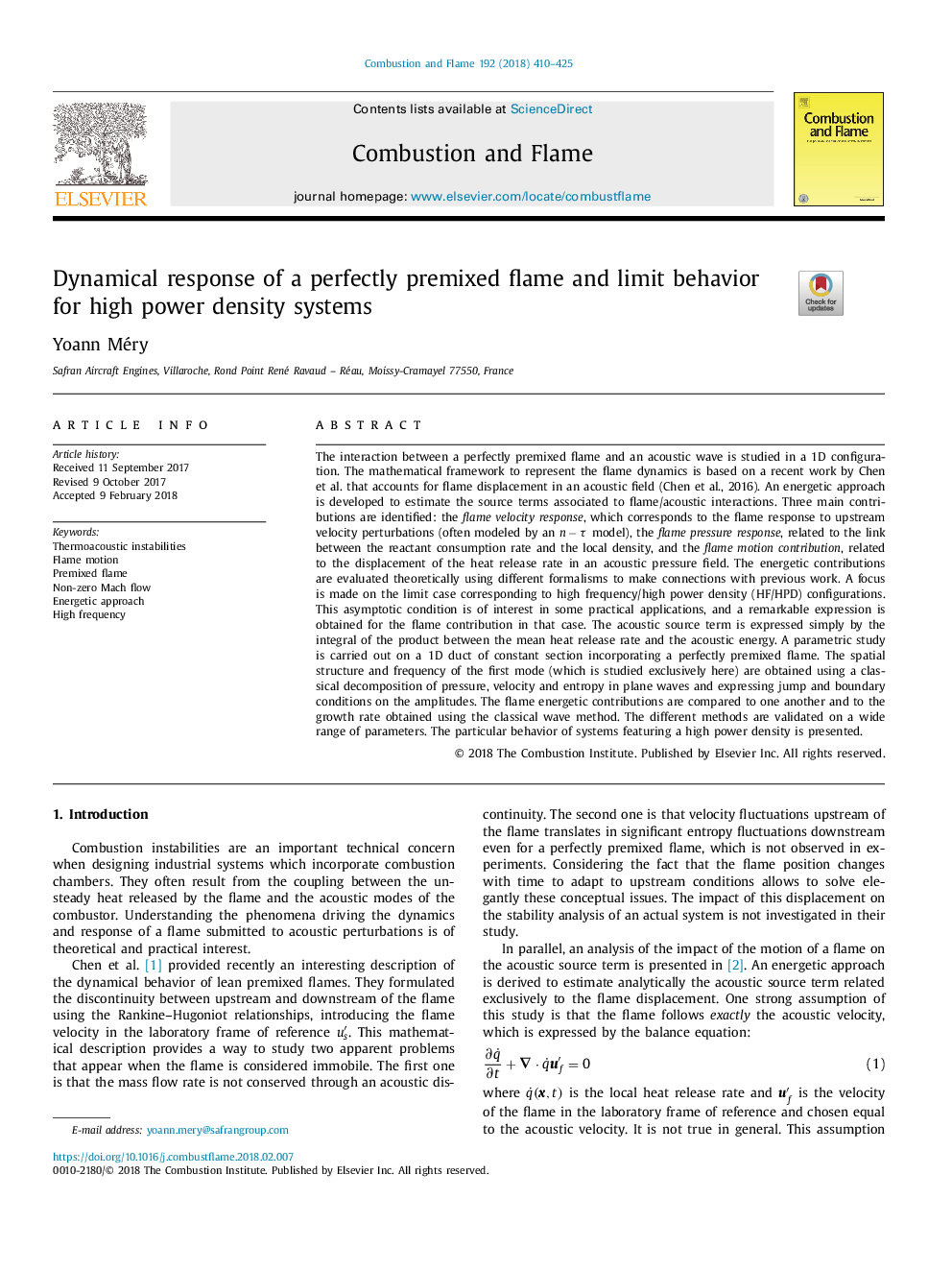| کد مقاله | کد نشریه | سال انتشار | مقاله انگلیسی | نسخه تمام متن |
|---|---|---|---|---|
| 6593695 | 1423545 | 2018 | 16 صفحه PDF | دانلود رایگان |
عنوان انگلیسی مقاله ISI
Dynamical response of a perfectly premixed flame and limit behavior for high power density systems
ترجمه فارسی عنوان
پاسخ دینامیکی شعله کاملا آماده شده و رفتار محدود برای سیستم های چگالی بالا
دانلود مقاله + سفارش ترجمه
دانلود مقاله ISI انگلیسی
رایگان برای ایرانیان
کلمات کلیدی
ناپایداری حرارتی، حرکت شعله، شعله پیش ساخته جریان ماخ غیر صفر، رویکرد انرژی فرکانس بالا،
موضوعات مرتبط
مهندسی و علوم پایه
مهندسی شیمی
مهندسی شیمی (عمومی)
چکیده انگلیسی
The interaction between a perfectly premixed flame and an acoustic wave is studied in a 1D configuration. The mathematical framework to represent the flame dynamics is based on a recent work by Chen et al. that accounts for flame displacement in an acoustic field (Chen et al., 2016). An energetic approach is developed to estimate the source terms associated to flame/acoustic interactions. Three main contributions are identified: the flame velocity response, which corresponds to the flame response to upstream velocity perturbations (often modeled by an nâÏ model), the flame pressure response, related to the link between the reactant consumption rate and the local density, and the flame motion contribution, related to the displacement of the heat release rate in an acoustic pressure field. The energetic contributions are evaluated theoretically using different formalisms to make connections with previous work. A focus is made on the limit case corresponding to high frequency/high power density (HF/HPD) configurations. This asymptotic condition is of interest in some practical applications, and a remarkable expression is obtained for the flame contribution in that case. The acoustic source term is expressed simply by the integral of the product between the mean heat release rate and the acoustic energy. A parametric study is carried out on a 1D duct of constant section incorporating a perfectly premixed flame. The spatial structure and frequency of the first mode (which is studied exclusively here) are obtained using a classical decomposition of pressure, velocity and entropy in plane waves and expressing jump and boundary conditions on the amplitudes. The flame energetic contributions are compared to one another and to the growth rate obtained using the classical wave method. The different methods are validated on a wide range of parameters. The particular behavior of systems featuring a high power density is presented.
ناشر
Database: Elsevier - ScienceDirect (ساینس دایرکت)
Journal: Combustion and Flame - Volume 192, June 2018, Pages 410-425
Journal: Combustion and Flame - Volume 192, June 2018, Pages 410-425
نویسندگان
Yoann Méry,
